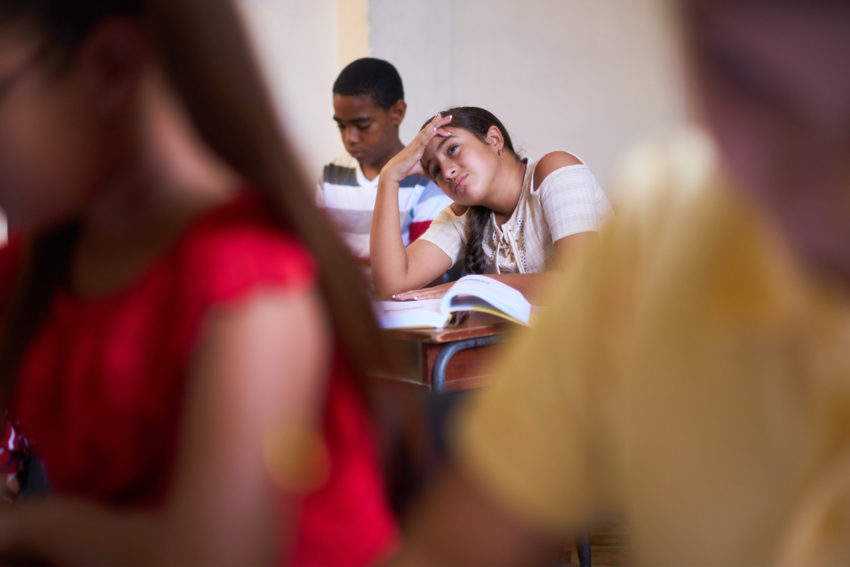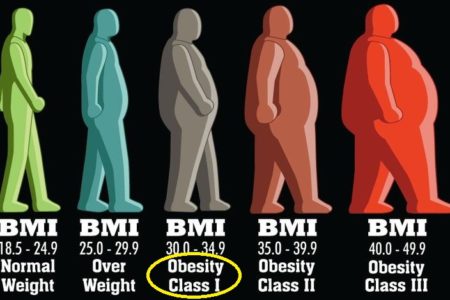
Share On Social!
More than one-third of U.S. high-school students were overweight or obese, including a higher rate among Latinos (37.7%) than their black (36%) and white (26.5%) peers, according to new CDC data.
Sharp disparities were also found in Latino sleep habits and health conditions like asthma.
The Data
The CDC’s Youth Risk Behavior Surveillance System monitors health-related behaviors. These behaviors usually develop during childhood and early adolescence. They contribute to the leading causes of death among youth and adults in the United States.
The CDC Youth Risk Behavior Survey is part of the surveillance system. It examines 121 health-related behaviors of high-schoolers.
Today we’re examining the data on obesity, sleep, and asthma.
Latino Youth and Obesity
 More Latino and black high-school students were obese (18.2% for both groups) than their white peers (12.5%), according to the CDC data.
More Latino and black high-school students were obese (18.2% for both groups) than their white peers (12.5%), according to the CDC data.
More Latino students were overweight (19.5%) than their black (17.8%) and white (14%) peers.
Nearly half of students, though, are trying to lose weight.
That was especially true among Latinos (55.4%) than white (45.1%) and black (42.3%) students.
Latinos kids continue suffering obesity at significantly higher rates than among their peers. Obese children may be at increased risk of becoming obese youth/adults.
Many studies have shown that childhood overweight and obesity has negative consequences on early death and disease in adulthood.
Latino Youth and Sleep
For optimal health, children ages 6-12 years should regularly sleep 9-12 hours per 24 hours and teens 13-18 years should sleep 8-10 hours per 24 hours, says The American Academy of Sleep Medicine.
3 of 4 high-school students still do not get enough sleep at night, according to the CDC data.
Specifically:
- The prevalence of getting 8 or more hours of sleep was higher among white students (26.7%) than Latino (25.5%) or black (24.1%) students.
- The prevalence of getting 8 or more hours of sleep was higher among 9th-grade (34.8%) than 10th-grade (26.6%), 11th-grade (21.4%), and 12th-grade (17.6%).
A recent study showed a potential causal link between sleep problems in youth and overweight and obesity in young adults. Consequently many studies have shown that degree of obesity negatively affects the quality of life and sleep variables in adults and symptoms of depression was greater in patients with higher sleeping difficulties.
Many studies also link sleep deprivation with higher risk for depression in youth who are particularly vulnerable to changes in sleep and mental health.
Among Latinos, acculturation stress and ethnic discrimination are associated with poor sleep in Hispanics/Latinos. Sadly, only 60% of Latinos get recommended hours of sleep, compared to 67% of whites.
Latinos and Asthma and Other Health Risks
Many kids come to school with a health condition, according to the CDC data:
- 22.5% of students have been diagnosed with asthma by a health care provider.
- The prevalence of having ever been told by a health care provider that they have asthma was higher among black (29.8%) and Latino (21.1%) students than white students (20.9%).
- More White (74.8%) and Latino (45%) students had a sunburn than their black peers (13%).
- More black (20.4%) students have to avoid eating certain foods due to allergies than their white (14.3%) and Latino (14.1%) peers.
Children and adolescents with chronic health conditions spend many hours in school and depend on trained school staff and a healthy school environment to help them manage these conditions.
Asthma morbidity is highly prevalent in urban minority children. Different ethnic groups had higher asthma prevalence in children and those in poverty.
Having access to school health services has been associated with better health, reduced absenteeism, and improved academic achievement for students.
Learn more ways to improve Latino school health!
By The Numbers
142
Percent
Expected rise in Latino cancer cases in coming years



